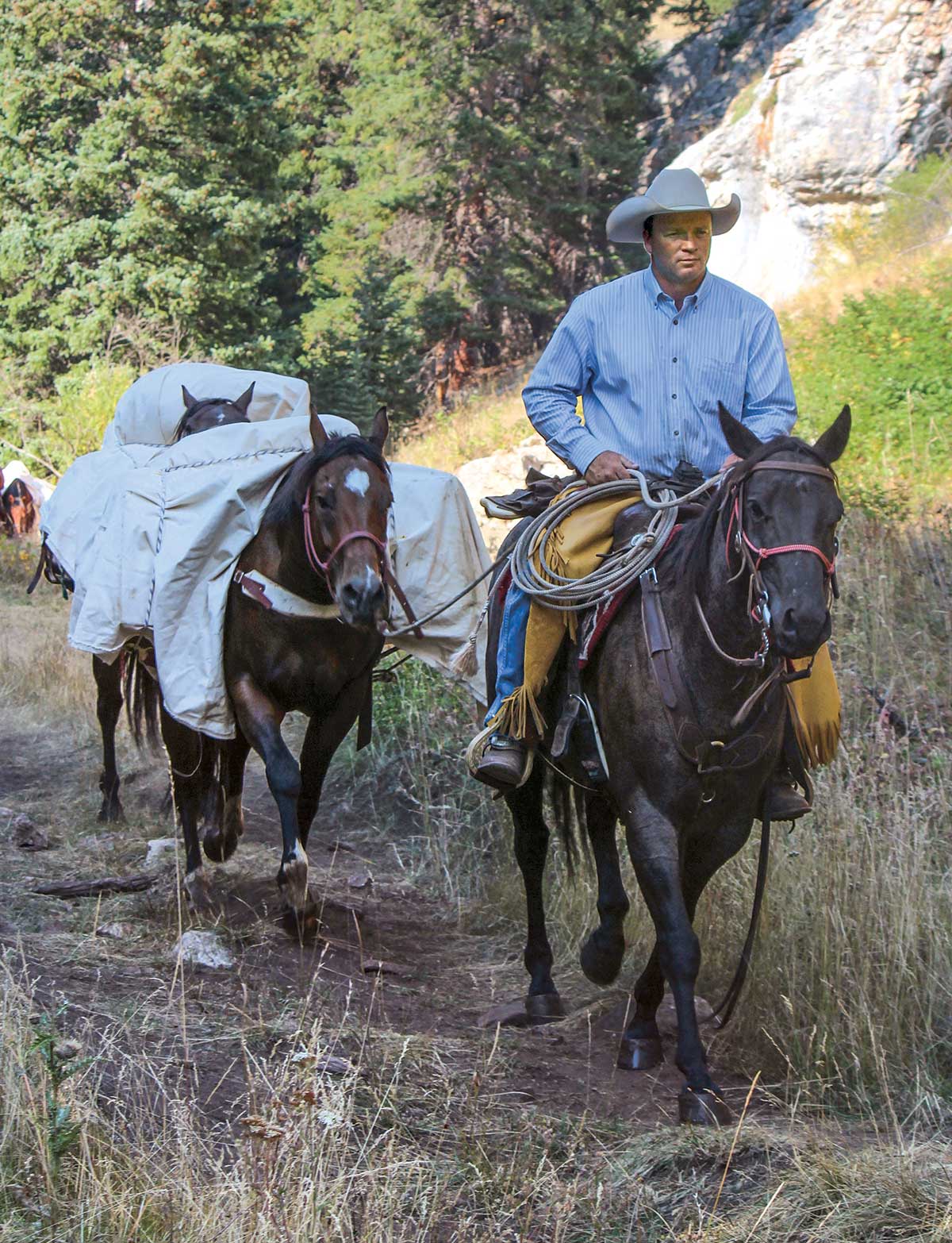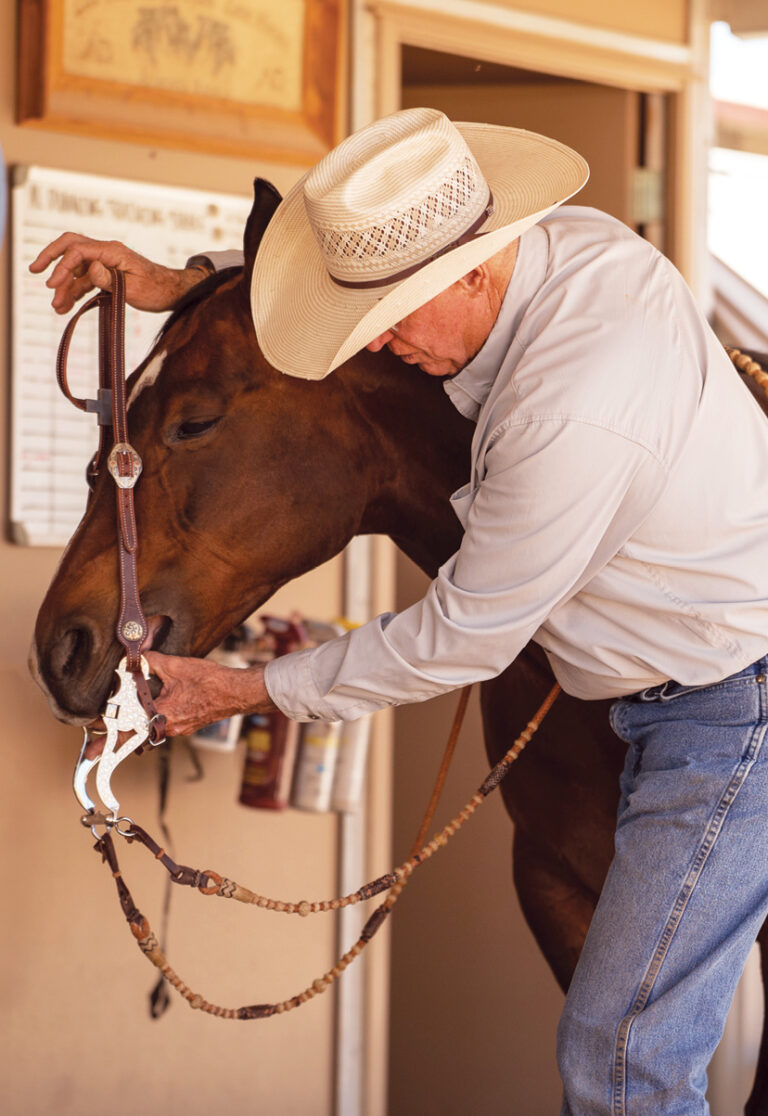
Overnight pack trips take your trail-riding adventures to the next level. You’ll ride and camp in pristine wilderness areas that offer breathtaking scenery and challenging trails. Don’t let the idea of a pack trip daunt you. Any seasoned rider on a conditioned trail horse with calm pack horses can make the trip if properly prepared. Here I’ll share how to prepare for a successful pack trip.
Outfitter or Alone?
If you presently ride close to home, you might consider hiring an outfitter for your first pack trip. With an outfitter, the work is done for you: Experienced mounts and pack animals are outfitted, gear is packed, and the agenda is planned. Wranglers set up camp and guide you over trails. A camp cook provides hot, delicious meals.
As an experienced horse owner, you’ll likely be respected and welcomed by the outfitter. You’ll typically be able to choose your involvement level; most outfitters welcome the extra help.
On the other hand, an unguided trip allows you the flexibility to explore as the mood strikes you. You’ll meet and overcome challenges on your own. You’ll hone your horsemanship skills and experience the satisfaction of self-sufficiency.

Prep Tips
To prepare for an unguided pack trip, first choose your route, itinerary, and camping sites so you’ll know how much food and what camping gear you’ll need to bring. Choose camping spots with sufficient water and grazing for your trail mounts and pack animals. Know your limitations. For instance, if high altitudes create problems for you, limit yourself to lower terrain.
Before you go, leave a detailed agenda with a trusted horseperson who’ll stay behind. Then, if something goes awry, this person will know when you’re expected back and where to look for you.
Get in physical and riding shape well before your trip. Walk or jog to condition your lungs. Ride every day. Desensitize your trail mount and pack horses by leading them over tarps and variable terrain. Load packs with pebbles and cans to desensitize the animals to rattling. Lead pack horses around trees or posts to teach them to adjust for the additional space of a pack.
Condition all the horses to hobbles, highlines, and nosebags. In camp, you’ll hobble and highline the horses at night. (Highline according to herd hierarchy to avoid unnecessary fights.) You’ll feed from nosebags to keep weed-free, pelletized feeds safely contained.

The Right Gear
Make a list of the gear needed for all the horses and the riders going on the trip. Invest in the most comfortable, professional pack equipment you can afford. Fitted, quality equipment lasts, and your horse will be less likely to become sore.
Tidy, well-maintained tack is mandatory. Clean and check your gear for general wear, and replace questionable items. Bring extra straps, off-billets, and latigos as well as pads, cinches, halters, and other necessities so you’ll have a replacement if something breaks or gets lost.
The recommended gear for a pack trip is similar to that of most trail rides. Here are my pack-trip must-haves for longer and overnight outings.
Nylon web halter with swivel: Bring one for each horse. An inline swivel attachment for the lead rope helps avoid twists and tangles.
Tree-saver straps: To protect trees from damage by the highline.
Riding and pack saddles: Fit before you go.
Panniers: To contain your supplies; use ones made from canvas or heavy-nylon.
Extra tack and accessories: To safeguard if something breaks.
Bells: Attach a bell to every third horse so the horses can be found if they wander.
Hobbles: Pack enough for half the horses; keep the others tied, in case your hobbled horses decide to roam.
Rope: Bring ropes in various diameters to use for a highline and to secure packs.
Compact saw: To cut firewood and clear downed branches.
Hatchet: To clear wood or use as a hammer.
Before you go, perform a test pack. This will help you learn how to distribute the load evenly and make sure everything fits. Weigh your packs. Make sure each horse will carry no more than 10 to 15 percent of his body weight in dead weight. Be prepared to repack if needed.
[READ MORE: HOOF CARE FOR TRAIL RIDING]
Respect Wildlife
On the trail and in camp, treat wildlife with respect. Don’t invade their space. Keep your camp clean and food hung up to help keep away uninvited guests. If you mind the animals’ boundaries, you shouldn’t have any issues on your multiday adventure.
Trainer, clinician, and lifelong cowboy Ken McNabb hails from Lovell, Wyoming. He helps riders and horses build and enjoy partnerships working on the ranch and riding on the trail. His show, Discovering the Horseman Within, airs weekly on RFD-TV. Learn more
about McNabb and find his clinic schedule at kenmcnabb.com.




